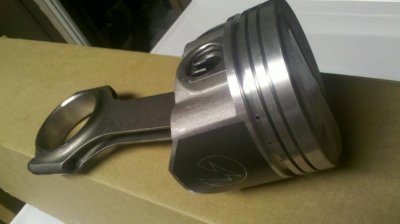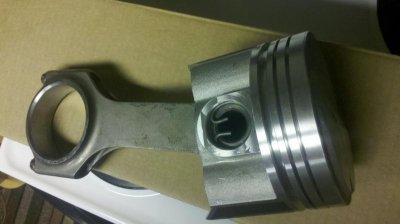So Meep Meep, with the richer fuel supply/mixtureof the 6 pak intake, do you think that is what cured the pinging problem that you had with the factory iron intake and Eddy 750? And by lowest trap speed yet, that means the MPH is down with the 6 pak set up? Or are you getting so much torque off the line that it isn't hooking up? I think that the 6 pak will work great once its dialed in.
Yes, I think the six pack is richer, thus curing the pinging at WOT. But that's not the solution! Trap speed is an indication of power, and the apparently leaner AFB on the factory iron intake running a fuel blend yielding approx 96 R+M/2 made more power than the six pack with a splash of race gas. On the street the six pack doesn't ping at WOT on 91, but I wanted some margin at the track so I put in a little 110 to my 91. To be fair I was having issues with a huge bog out of the hole with the six pack, but I don' t think that had as much of an effect on trap speed as it did on ET. What I need to do is get some dyno time in and check mixture on both setups.
I agree that the six pack should work much better than it is and could possibly be the ultimate street combo, but I have yet to get there.
Oh, I was running slicks with both setups.
- - - Updated - - -
Meep-meep and I are thinking just alike. Cam for the compression ratio. I do agree with Rusty that my current Racer Brown cam may not be ideal with the new heads and compression ratio. I'll probably have Jim do another grind for me based on the aluminum heads. It sure ran great with the 906's but as you can tell from the witness marks on the pistons, there was some rattling, probably because of the open chamber design and flattops. Now I need to figure how much to cut the MP452/edelbrock heads. I think that 74cc-75cc finished product is going to put me in the ballpark of an 89 octane 9.5. Anybody have the cutting specs for these heads?
That's right, but first set the compression ratio for the fuel used and cam for max cylinder pressure. I'm thinking 150-160 PSI for 89 gas. I'm running 190 PSI with 10.1:1 and that's too much with iron heads and 91 R+M/2. Regarding compression ratio for iron vs. aluminum I have heard from serious engine builders you can go +.5 point on aluminum. Then I have heard form other builders it makes no difference.
The 906 head does provide quench, just not as much as say the fully closed chamber type. There is a fine line of proper quench to provide swirl in the chamber and to get ALL the fuel burned from one end of the chamber to another. The flame must get all the way across to burn everything and if you have too tight of a gap it won't burn.
This is especially true about the annular clearance above the top ring. The fuel in that little gap never gets burned and thus contributes to HC emissions, hence the advent of hypereutectic pistons for the OEM applications. The stronger alloy will allow the top ring to be farther up on the piston reducing the volume of that annular gap. I will also suggest that the huge bore chamfer on my 78 440 is an effort to get the flame in that area to burn the fuel.
The whole thing can be very complicated, which is why you need to address it in the proper sequence. Starting with fuel octane is perfect because there is a compression limit to it and you want to be on the verge of detonation for the highest efficiency.


















